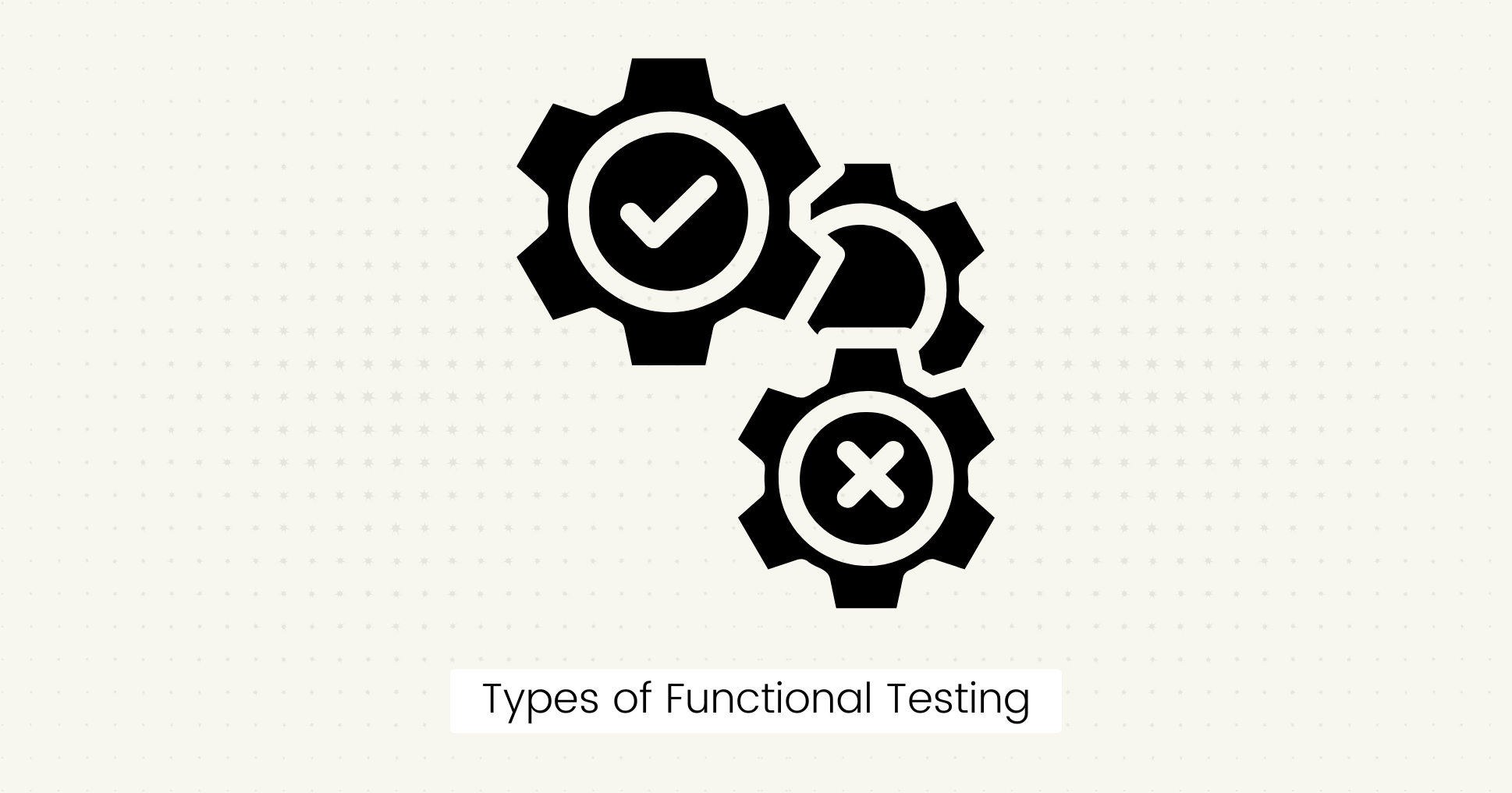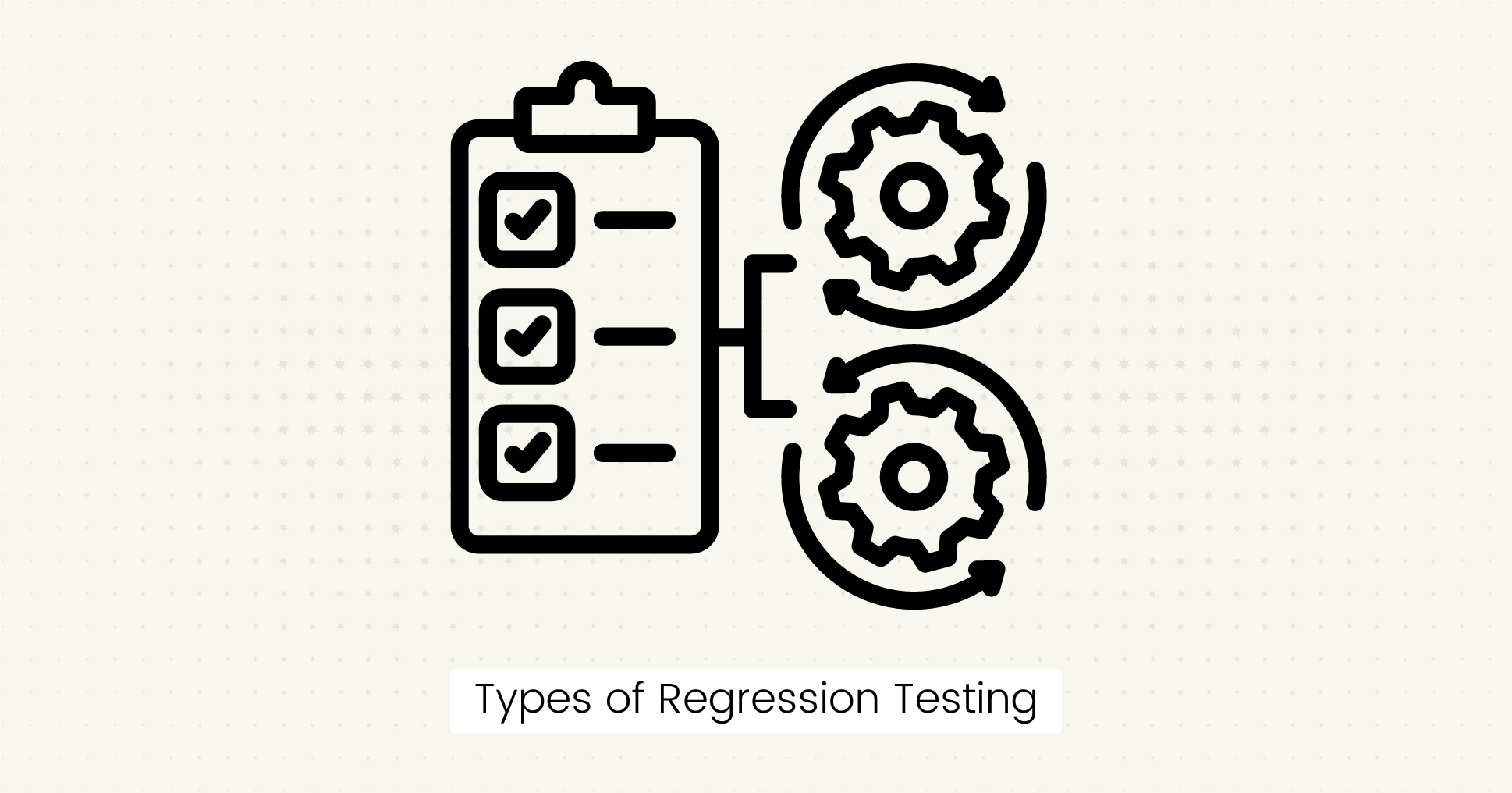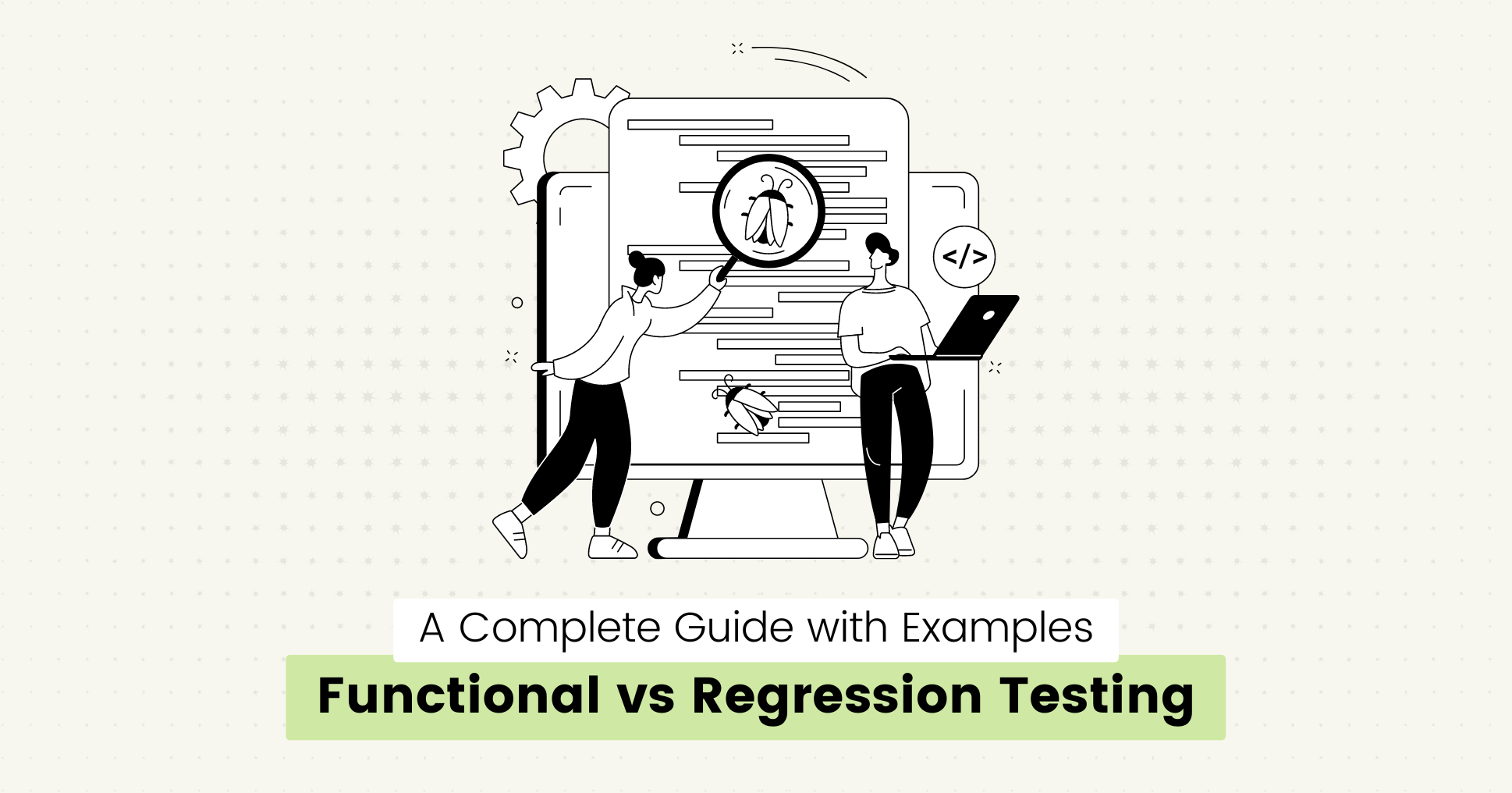Making sure your app works well can be tricky. You need to know how to ensure everything is okay without missing anything important.
What if your app suddenly stops doing something it used to do just because you added something new?
Or
You are spending excessive time on insignificant details that can cause major errors to go unnoticed.
Here are two easy methods to test your app for a better user experience.
First, there's functional testing, which ensures every button does what it's supposed to, such as making sure you can buy something from an online store smoothly.
Then, there's regression testing, which checks that when you add new stuff, you don't mess up anything that was already working fine.
Using both methods helps catch more mistakes and keeps your app running smoothly.
Functional vs Regression Testing:
Let's look at the major difference between functional and regression testing with examples.
What is Functional Testing?
Functional testing is like checking every part of an application to make sure everything works as it should.
It's about going through each button, switch, or feature in an app or software to see if it does exactly what it's supposed to do.
Functional testing will ensure that the character jumps when you press the jump button if there's a game.
Examples:
- Check if users can successfully log in with valid credentials or deny access with incorrect ones.
- Confirm that the search feature returns accurate results based on user queries.
- Verifying that customers can complete a payment using different methods (credit card, PayPal, etc.) and that transactions are processed securely.
- Test if users can upload files of supported formats and sizes and if the system rejects unsupported ones.
- Verify that users can add items to the shopping cart, update quantities, remove items, and that the cart correctly calculates totals.
Who can perform functional testing?
- Quality Assurance (QA) Team / Testers
- Developers
- Business Analysts
- End Users or Product Owners
Types of Functional Testing:

Functional testing has several types, each targeting specific aspects of an application's functionality.
Here are some common types:
- Unit Testing: Check small parts of an app, like a single button, to ensure each works independently.
- Integration Testing: Ensure that different app parts work well together, such as checking if the score adds up correctly after pressing a game's score button.
- Sanity Testing: Quickly check the main parts of an app to confirm that big problems aren't present, so it's not a waste of time to test more.
- Smoke Testing: This is a quick check to see if the app's basic features work and if it can start up without crashing.
- Regression Testing: Although often categorized separately, it checks old app parts that still work after adding new things or making changes.
- User Acceptance Testing (UAT): Asking real users or customers to try the app and see if they're happy before it's all finished.
Now, you have a query about regression testing being part of functional testing. Don't worry; we have answered your queries in the FAQ section at the bottom of this guide. So, keep reading.
What is Regression Testing?

Regression testing is like double-checking your work after making changes to confirm you didn't accidentally mess something up that was already working fine.
It's a way to ensure you don't break any old parts when you add something new or fix something in an app.
Suppose you change a shopping website's product page to improve user experience.
In that case, visual regression testing ensures that the images, product descriptions, and add-to-cart buttons appear correctly across different devices and screen sizes without missing elements or overlaps.
Examples:
- You added a new chat feature to a social media app. Regression testing checks that the posting, commenting, and liking features still work as before the chat feature.
- When a video game's loading times are improved, it verifies that the game still saves progress correctly, multiplayer connections work well, and graphics remain original.
- After applying a security patch to an online banking system, regression testing checks that login, fund transfer, and statement generation features operate securely and as expected.
Automation Tools for Regression Testing:
There are many automation tools available to facilitate efficient and effective regression testing.
You can explore some popular ones:
- Selenium
- Ranorex
- Lost Pixel (Test UI Components in seconds)
- Cypress Visual Regression
Who can perform regression testing?
- Quality Assurance (QA) Testers
- Developers
- Automation Engineers
- Product Owners or Managers
- End Users or Beta Testers
Types of Regression Testing:

You can categorize it into several types, each focusing on different aspects of software for comprehensive coverage.
Here are some common types:
- Visual Regression Testing: It checks that the visual aspects of a web page or application, like layouts, images, and text styles, still look right after changes.
- Retest-All: Check everything again, even if it wasn't directly changed, to make sure nothing broke.
- Progressive: When new stuff is added, this testing checks the new and old parts to confirm they all work well together.
- Selective: It involves picking specific parts to test, mainly those that might be affected by the recent changes.
- Partial: This is very similar to selective testing but focuses even more closely on the exact spots where you made the changes.
- Complete: This is when you test the whole software thoroughly, usually after big updates or changes.
- Unit Regression Testing: It involves checking the smallest parts of the software individually to ensure that the changes didn't break anything in those tiny bits.
Final Words:
You have gained enough knowledge about functional vs regression testing. It's time to do practical stuff and implement them in your workflow for better software development.
User experience starts with the great UI.
You can manually test UI errors for a few pages, but with automation, you can do it much faster and save time.
That's where lost pixel comes in, and you can automate entire visual regression testing with it.
FAQs:
Is regression testing part of functional testing?
Yes, regression testing is often considered part of functional testing. While functional testing focuses on verifying individual software functions or features, regression testing involves retesting those functions to ensure they still work correctly after changes or updates have been made.
How often should regression testing be conducted in Agile Projects?
In Agile, regression testing should be performed after every code change or feature addition to prevent new bugs and disruptions.
Is functional and system testing the same?
Functional testing focuses on individual functions or features, while system testing evaluates the entire integrated system's performance against specified requirements.

About Dima Ivashchuk
Hey, I'm - Dima the co-founder of Lost Pixel. I like modern frontends, building stuff on the internet, and educating others. I am committed to building the best open-source visual regression testing platform!
